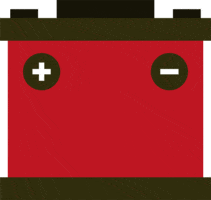Metric Capacity Worksheets
The concept of capacity is often misunderstood because it is a very similar concept to volume. Many times, you will see them used synonymously. I even saw this misinterpretation used a TED Talk once. Volume refers specifically to amount of a substance that is present. Capacity is focused on the container that substance will be found in. It is not worried about the amount in the container rather the potential amount the container could possibly hold. In this section we are going to focus on the measurements that are particularly related to the metric system. These worksheets help you convert metric values of capacity and understand their relative size.
Aligned Standard: 4.MD.A.1
- Step-by-Step Lesson- Did you drink enough water today? You should have 64 ounces a day or one mega-big Gulp!
- Guided Lesson - No need to cry over spilled milk, just clean it up!
- Guided Lesson Explanation - Lots of movement between liters and milliliters.
- Liquid Volume Conversion Worksheet - We focus on the core units of liquid volume.
- Capacity Word Problems Worksheet - Simple one-way liquid volume conversion problems for you in story form.
- Answer Keys - These are for all the unlocked materials above.
Homework Sheets
We bounce around a bit with this we convert liquid volume capacity in unit and word problem form.
- Homework 1 - Convert the milliliters and liters.
- Homework 2 - Liters are the basic unit of liquid volume in the metric system.
- Homework 3 - We know that 1 liter of liquid volume is equal to 1,000 milliliters.
- Homework 4 - When working with conversion of units it is also best to set it up as a portion. Start with the known conversion.
- Homework 5 - Place the volume you are converting directly under the known conversion.
Practice Worksheets
You will find a nice mix of repetition and critical thinking in this pack of practice sheets.
- Practice 1 - Place it under the same unit of measure.
- Practice 2 - We are looking to find the value in units of milliliters. We can therefore complete the proportion setup by placing a variable (in this case we'll choose "x") under the mL column.
- Practice 3 - The bottle of soda holds about____ of liquid.
- Practice 4 - If the store is having a sale on orange juice, 5 liters for $7.99, how many milliliters of orange juice can you buy for the same price? Show your work.
Math Skill Quizzes
The quiz set here covers all the major topics we have targeted in this section.
- Quiz 1 - These follow the same rhythm. Start with the known relationship between milliliters and liters (1 L = 1,000 mL). Then put the value you have under the same units and complete the proportion to find the converted value.
- Quiz 2 - When converting milliliters and liters remember: 1000 milliliter mL is equivalent to 1 Litter (L)
- Quiz 3 - Circle the answer that is the best estimate of the liquid's capacity.
- Quiz 4 - How many liters are needed to heat their home?
Measures of Metric Capacity

The capacity of an object is the amount of matter it can hold within it. This measure is sometimes confused with a measure of volume, but they are not one and the same. Volume focus on the molecules of the matter whereas capacity is more focused on the container itself. Volume is an actual amount and capacity is the potential amount of a substance.
The principal measuring unit for capacity is liter but we use multiples and sub-multiples as per the quantity that we are dealing with. The common units for measuring capacity and volume includes milliliters (ml) and liters (l). Milliliters are units that we use for measuring very small volumes and liters are used for measuring large quantities. We cannot measure the capacity of a toothpaste bottle in kiloliters which is used to specify the volume of an Olympic-size pool. For huge quantities we use kiloliter, hectoliter, and decaliter. For small quantities we use deciliter, centiliter, and milliliters. Other units for measuring capacity include cubic meters, cubic decimeters, and cubic centimeters.
Measures of Imperial Capacity
As we know the United States and two other countries do not fully follow the metric system and they still use the British Imperial System. The common units that used in this system for capacity apply evenly to liquid or dry measures, which is interesting. There are five units that are commonly used for this measure. The smallest unit this system follows is ounces. This is followed, in order, by cups, pints, quarts, and gallons. Gallons is the larger value that we often associate only with liquid volume. This is most likely because we are accustomed to buying gallons of milk and water at the grocery store. We do not see this unit used much, if ever, outside of liquid uses, but there is a dry gallon in the Imperial system as well.